The roof is a critical element of your home, so it’s important to know what you’re getting when deciding on roofing material. Compare the pros and cons of different materials while considering factors such as cost and durability with our roofing materials guide.
Asphalt Shingle Roof
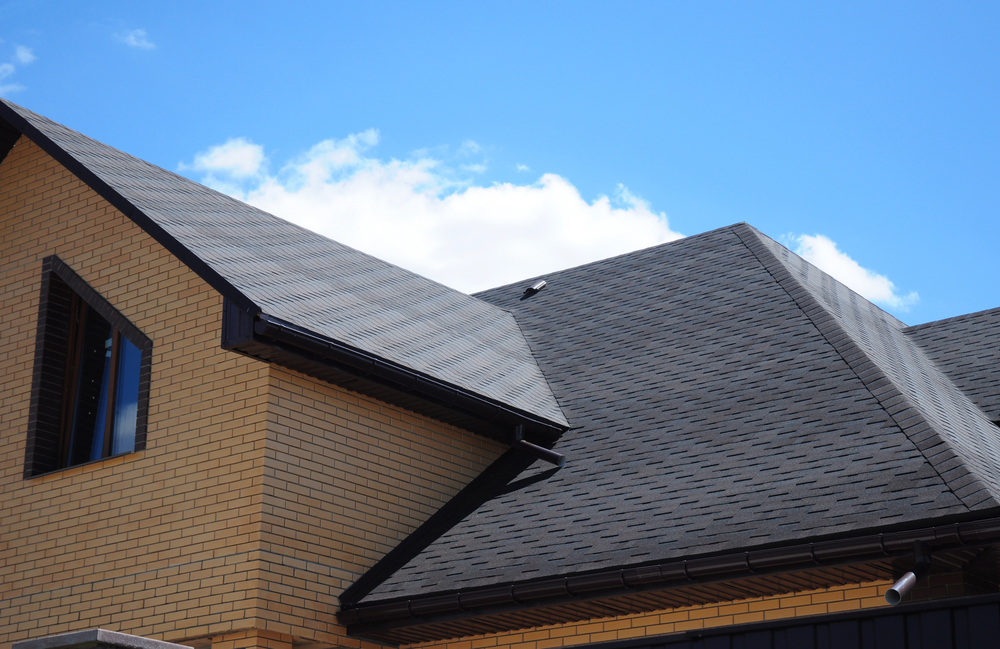
Asphalt roofing shingles are the most popular for residential homes, with almost 75% of homeowners choosing this option. Introduced in 1903 by Henry M. Reynolds, by 1939, asphalt tiles were in general use with 11 million squares of shingles produced that year. Today they continue to be a popular item due to their affordability, durability, and curb appeal.
Lifespan
Depending on the type of shingle used, asphalt composite shingles can last anywhere from 15 – 40 years. The three-tab shingles typically last 20 years, while the more expensive architectural shingles have an average lifespan of 30 years.
Cost (Material Only)
$100 – $200/square depending on the type of asphalt shingle.
***Source: HomeAdvisor’s Roofing Cost Guide
Pros
Affordable – The upfront cost of asphalt shingles is significantly lower than other options making them a good choice for cost conscientious homeowners.
Fire Resistant – Considered Class A fire-resistant, they can withstand up to 2 hours of burning. You have more time to get your family out of the house if a fire breaks out.
Stylish Options – Available in various styles and colors, asphalt shingles look good on any home. There is something to fit your style and budget, from simple three-tab shingles to textured, architectural shingles.
Cons
Mildew & Moss – If not properly maintained, asphalt shingles can be more prone to mildew and moss. Ongoing maintenance and roof cleanings are critical to ensure the longevity of an asphalt roof.
Price Fluctuations – The price of asphalt shingles is vulnerable to the fluctuation and pricing of crude oil. With higher crude oil prices, the more expensive asphalt shingles become.
Flat Roofs – Asphalt shingles should not be used on flat roofs. Designed to shed rainwater and snow through overlapping rows, a flat roof accumulates water which would seep under the seams of the asphalt shingles and into your house.
Metal Roofing material
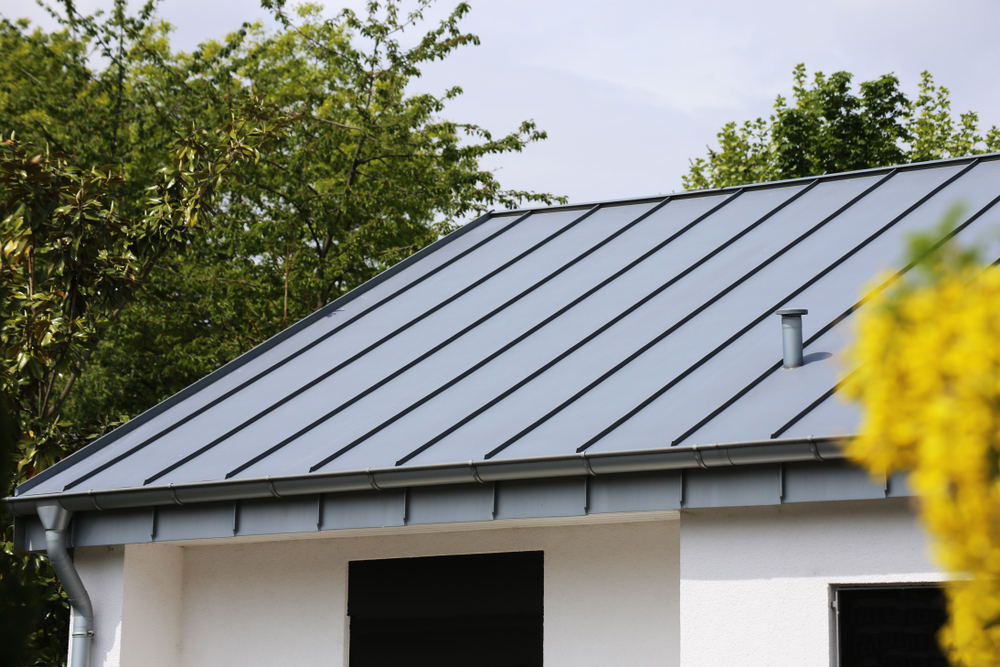
Metal roofs fell out of favor in residential homes for many years due to their cost and straightforward, simplistic appearance. With recent innovations, metal roofing materials now mimic shingles, shakes, slate, and tiles and are making a big comeback. Metal roof shingles come in various options, including steel, copper, zinc, and aluminum. However, copper will drive up the price significantly!
Lifespan
Most metal roofs have a 50-100 year lifespan, with most manufacturers providing warranties of 30-50 years. Longevity also depends on the type of metal used, local climate, and ensuring a correct roof installation process.
Cost (Material Only)
$120 – $900+/square with steel as the cheapest and copper being the most expensive.
***Source: HomeAdvisor’s Roofing Cost Guide
Pros
Versatile – Metal roofs now mimic shingles, shakes, slate, and tile. With dozens of colors available, there is something for any home. They look great on rustic-style homes, including cabins, cottages, and wood-sided homes.
Durability – Their ability to withstand hurricanes, hail, ice, snow, and fires makes metal roofs a popular and necessary choice for those living in areas with extreme weather. FEMA recommends that areas prone to natural disasters install metal roofs.
Fire Retardant – With Class 4 fire ratings, metal roofs can help to protect your home if you live in a fire-prone area. Some insurance companies will give discounts if metal roofs are installed.
Cons
Expensive – Compared to asphalt and wood roofing, metal roofs are considerably more costly, with copper roofing tipping the scales to the extreme side.
Complicated Installation – Due to the nuances of metal roofs, homeowners should hire highly qualified roofing contractors specializing in metal roofing materials. If water accumulates on the roof due to poor installation, a home’s structure can sustain severe damage.
Noise – Metal roofs can be noisy when dealing with heavy rains or hail. More insulation can muffle the noise, but that only adds to the cost.
Concrete & Clay Tile Roofing material
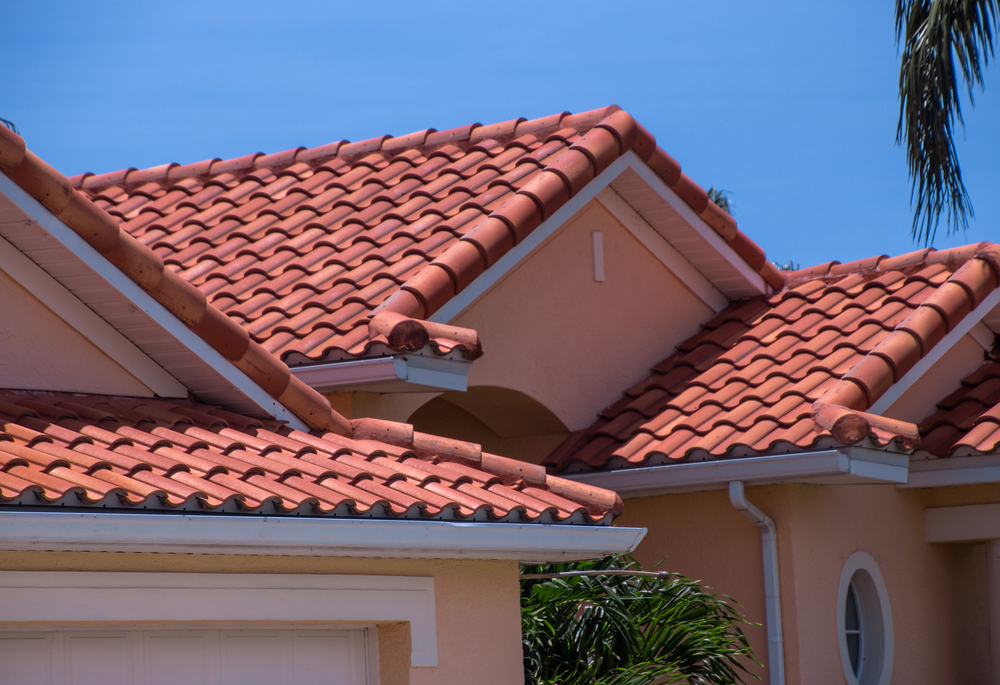
Tile roofs have been around for thousands of years – dating back to the ancient Greek & Roman eras. They are a beautiful, durable option and often used in hot weather or salt air exposure areas, such as the Southwest, Florida, and California. Concrete and clay tiles are available in various shapes, styles, colors, and textures. Due to their durability, a tile roof may be the only roof you’ll ever need.
Lifespan
With such high durability, tile roofs may outlast a home’s structure. Clay tiles can last more than 100 years, while concrete tiles typically come with a 50-year warranty. They can withstand hail, high winds but are more prone to damage in climates that see drastic temperature swings, such as those in the Northwest or New England.
Cost
$800 – $1800/square for clay tiles
$150 – $250/square for concrete tiles
***Source: HomeAdvisor’s Roofing Cost Guide
Pros
Low Maintenance – Concrete or clay tiles are rarely in need of repairs or ongoing maintenance. They are also less prone to leaks.
Stylish – A beautiful, unique option with many different colors and styles available. The aesthetics of roofing tile can significantly increase curb appeal. They even come in options that resemble traditional shingles or wood shakes.
Eco-Friendly – Made from organic materials and not chemicals, clay and concrete tiles are easily recycled or ground up when removed.
Cons
Expensive – Clay and concrete tiles are an expensive, upfront option. However, due to their longevity, the average cost over their lifespan is much lower than other options. If you live far from the source of the tile, freight costs are added due to the slate tile’s weight which could be quite expensive.
Heavy – Not all structures can handle the weight of tile roofs which can range from 850 pounds/square for clay and 950 pounds/square for concrete. If changing roof materials, consider hiring an engineer to ensure your structure can handle the weight.
Delicate – If any repairs or cleaning are necessary, workers must be careful not to break the individual shingles. They are fragile shingles that can also easily break due to fallen tree branches.
Wood Shingle & Shake Roofs
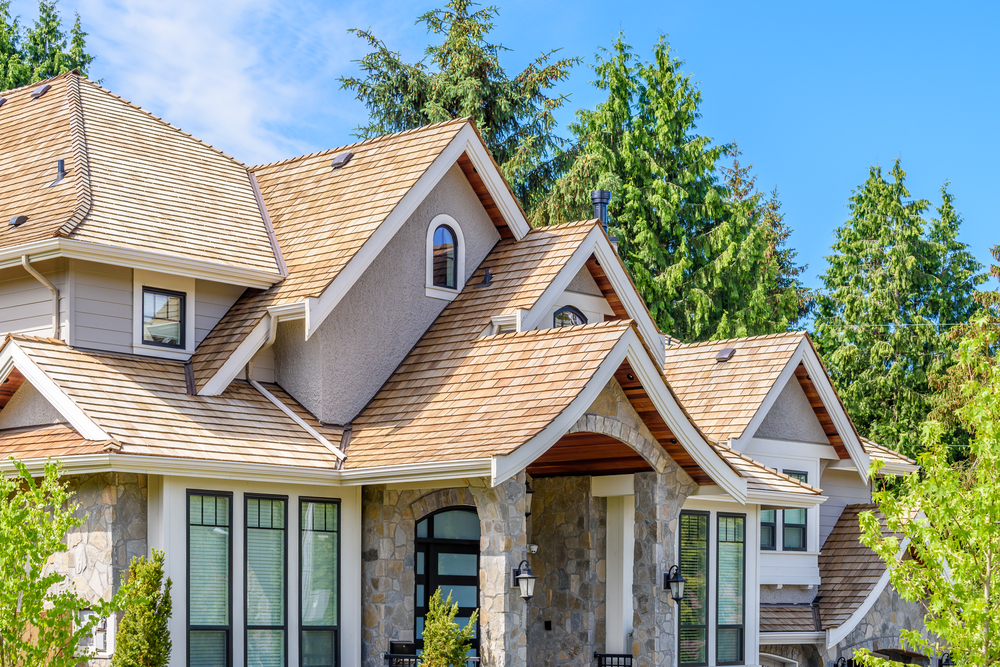
Wood shingles and shake roofs are stylish options for any contemporary home. Dating back to original colonies, wood shingles and shakes are found on various house styles, including Cape Cod homes. There are two types of wood roofing materials – shingles and shakes. Shingles provide a smoother, more uniform look across the entire roofing structure. While wood shakes, traditionally hand split, give a thick textured, rustic feel. Each wood shake is slightly different, enhancing the textured depth and dimension.
Lifespan
The average life span for wood shakes and shingles does vary. Wood shingles, on average, last 25 to 30 years. Although some wood shingle roofs last longer due to mild climate conditions and meticulous maintenance. On the other hand, wood shakes typically last 35 to 40 years.
Cost
$250 – $600/square depending on the type of wood.
***Source: HomeAdvisor’s Roofing Cost Guide
Pros
Longevity – Wood roofing materials tend to have lifespans comparable to asphalt shingles, making them competitively priced over their lifespan.
Curb Appeal – An unique option for residential homes, the beauty of wood shingles and shakes makes a splash on any home.
Eco-Friendly – Wood roofs use natural, biodegradable products that can be recycled, reused, or thrown out without an impact on the environment. Efforts are also made to replant trees as they are cut down.
Cons
Higher Flammability – Due to the material, wood roofs are more flammable, requiring periodic fire retardation treatments or using pre-treated shingles. Depending on the area, wood roofs may be banned, so talk with your contractor if considering these types of shingles.
High Maintenance – To prevent drying out, warping, cracking and mildew, untreated wood shingles & shakes require ongoing treatments using preservatives and fungicides. Ongoing maintenance is vital to maintain an average lifespan.
Costly Repairs – If repairs are needed, they tend to be more expensive than other roofing material options. Regular maintenance can help avoid repair costs.
Slate Roofing materials
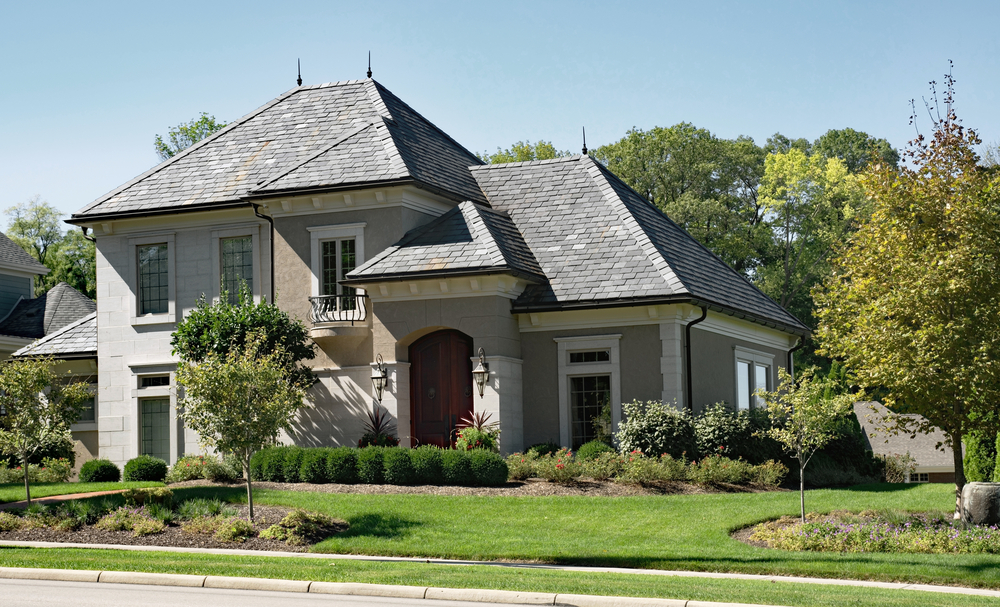
Slate is a hard, durable material that has been used on roofs for over 1000 years. The first recorded instance of use in private homes dates back to 1300 AD in North Wales. Usage of slate declined in the United States after 1900 with the introduction of asphalt shingles. Still not a common roofing material in the United States, it is prevalent in Great Britain.
Lifespan
It’s not unreasonable to have a slate roof that lasts more than 100 years if properly installed. Most companies will include a warranty of at least 50 years but look for a minimum 75-year warranty.
Cost
$800 – $1800/square
***Source: HomeAdvisor’s Roofing Cost Guide
Pros
Durability – Another excellent durable option, slate roofing materials, keep out harmful insects such as termites and carpenter ants. It’s less prone to rot because slate absorbs little water and sheds water if installed correctly.
Appearance – A beautiful material that only adds to a home’s curb appeal and resale value.
Fire Resistance – Slate tiles are entirely fireproof and non-combustible without the need for additional products or treatments. A great option if you live in a wildlife fire area.
Cons
Heavy – Slate shingles can weigh up to 800 to 1000 pounds per square. Consider hiring an engineer to ensure your home is structurally sound to withstand the weight.
Lack Of Experts – Due to the limited demand for slate roofs, there are very few roofing contractors that truly understand the nuances of installing slate shingles. If not properly installed, slate roofs can quickly lead to a host of problems, including leaks, rot, and more.
Expensive – The cost for a slate roof is a substantial initial investment. Slate isn’t a cheap material, and the cost of installation due to weight and lack of slate roofing experts only increases the cost. If you live far from the source of the tile, freight costs are added due to the slate tile’s weight which could be quite expensive.

